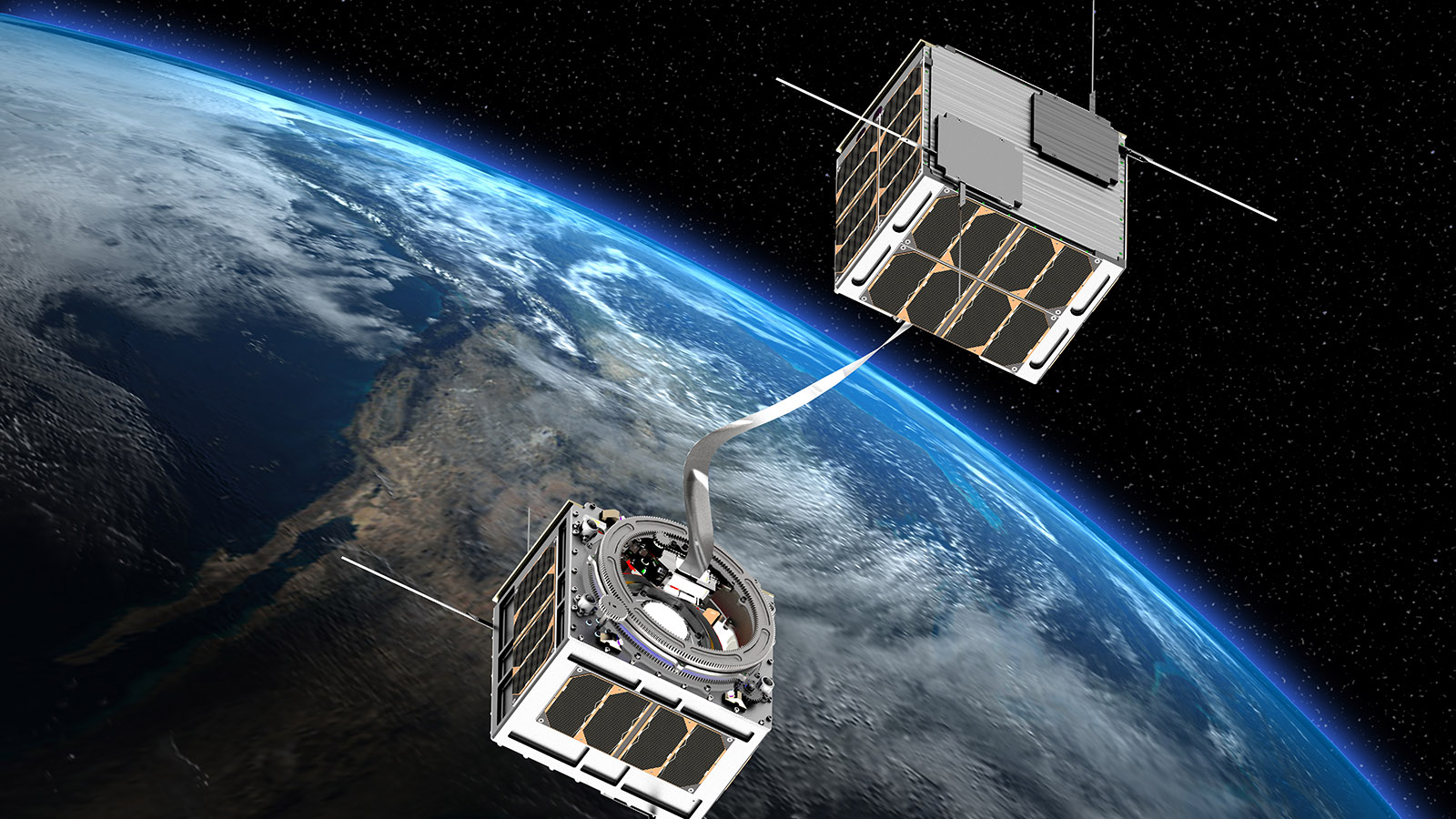Stay Up to Date
Submit your email address to receive the latest industry and Aerospace America news.
The Space Tethers Technical Committee focuses on the development and use of tether-based technology for space systems.
The European Innovation Council in September awarded 2.5 million euros ($2.4 million) to the E.T.PACK Initiative through its EIC Transition program, which funds the maturation of novel technologies to bring them to market. Electrodynamic Tether Technology for Passive Consumable-less Deorbit Kit-Fly, or E.T.PACK-F, is the natural continuation of the European Commission-funded E.T.PACK project, which concluded in November after developing a prototype of a 12U, 24-kilogram deorbit device based on electrodynamic tether technology. With an orbital demonstration flight planned for 2025, the goal of E.T.PACK-F is to design, manufacture and test a flight-ready deorbit system, which will include an aluminum tape tether about 2 centimeters wide and 500 meters long for electrodynamic drag propulsion and stabilization. The E.T.PACK-F consortium is coordinated by the Universidad Carlos III de Madrid, with collaborators from the University of Padova, the Technical University of Dresden, the Spanish company SENER Aeroespacial and German startup Rocket Factory Augsburg.
During the year, researchers at Northwestern Polytechnical University in China prepared for an early 2023 launch of a tethered cubesat from a Long March CZ-3 upper stage. The space tether would minimize the risk that the cubesat will become space debris upon mission conclusion, as it will remain connected to the upper stage and burn up along with the upper stage during reentry. The China Academy of Space Technology funded the Beijing Institute of Spacecraft System Engineering to develop the design of a probe for planetoid sampling via a flexible space tether.
In October, work was completed on cross verification and benchmarking of five different electrodynamic-tether simulation codes for investigating electrodynamic-tether dynamics and performance. Researchers from the Japan Aerospace Exploration Agency, Pennsylvania State University, Universidad Carlos III de Madrid, Universitá degli Studi di Padova, the University of Michigan and York University ran their codes, which incorporate tether models with different fidelities and computational costs, under different scenarios that represent a range of possible missions. The benchmarking showed broad agreement in simulation results and that the various codes can be leveraged to support tethered mission planning and operations.
Researchers at University of Strathclyde in the United Kingdom completed in June their study of symmetrically and unsymmetrically loaded motorized momentum-exchange tethers for Earth-moon transfers. Unsymmetrical loading occurs when there are different payload masses at the two ends of the rotating tether system, which could be due to unexpected payload loss or failure to retrieve. Although mass symmetry is highly desirable both dynamically and logistically, the researchers demonstrated how the system could be restored and characterized this for circular and eccentric orbits.
Researchers at the University at Buffalo investigated system elements for tether-based orbital debris mitigation through two grants from the U.S. National Science Foundation awarded in May and August 2021. Applying optimization and machine-learning techniques, they demonstrated reliable operation of tether-and-net capture mechanisms for active debris removal. They are also developing estimation and control for the post-capture phase of such a mission. In April, they reported on how to estimate the inertial parameters of tethered uncooperative space debris, meaning one attached to an electrodynamic tether that mission controllers are unable to command to maneuver.
Through a project funded in January by the European Space Agency, the Universidad Carlos III de Madrid and collaborators University of Padova, Dresden University of Technology, and SENER Aeroespacial throughout the year carried out research and development activities to combine electrodynamic tether and thin-film solar cells technologies into a single device. The manufacturing and testing activities, corroborated by modeling and simulation, demonstrated that adding thin film solar cells on one side of a bare tape-like tether enhances the power generation capabilities and boosts the deorbit performance of tethered systems.
Stay Up to Date
Submit your email address to receive the latest industry and Aerospace America news.




